

Its modern face is dazzling, but China is no one-trick pony. The world's oldest continuous civilization isn't all smoked glass and brushed aluminium and while you won't be tripping over artefacts – three decades of round-the-clock development and rash town planning have taken their toll – rich seams of antiquity await. Serve it all up according to taste: collapsing sections of the Great Wall, temple-topped mountains, villages that time forgot, languorous water towns, sublime Buddhist grottoes and ancient desert forts.
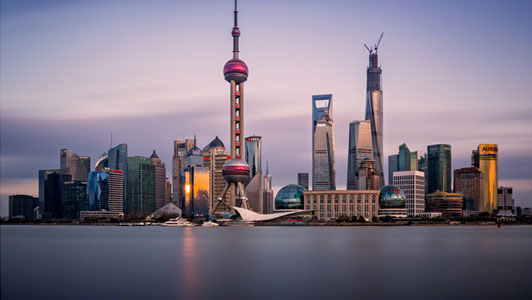
Shanghai, on China’s central coast, is the country's biggest city and a global financial hub. Its heart is the Bund, a famed waterfront promenade lined with colonial-era buildings. Across the Huangpu River rises the Pudong district’s futuristic skyline, including 632m Shanghai Tower and the Oriental Pearl TV Tower, with distinctive pink spheres. Sprawling Yu Garden has traditional pavilions, towers and ponds.
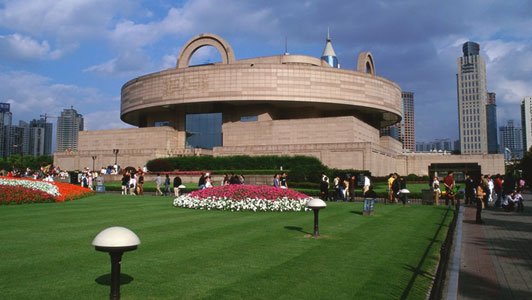
Shanghai Museum
The Shanghai Museum is a museum of ancient Chinese art, situated on the People's Square in the Huangpu District of Shanghai, China. Rebuilt at its current location in 1996, it is considered one of China's first world-class modern museums.

City God Temple Of Shanghai
The City God Temple or Temple of the City Gods, officially the City Temple of Shanghai, is a folk temple located in the old city of Shanghai, China. It commemorates the elevation of Shanghai to municipal status and is the site of the veneration of three Chinese figures honored as the city gods of the town. It is also known by some locals as the "Old City God Temple".
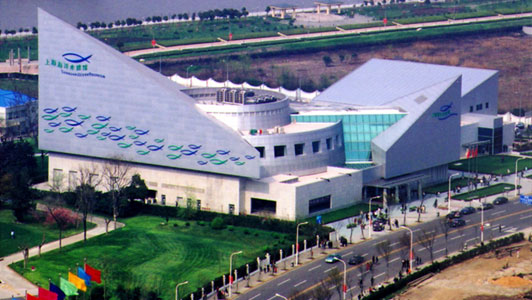
Shanghai Ocean Aquarium
The Shanghai Ocean Aquarium is a public aquarium located in Shanghai, China. Designed by Advanced Aquarium Technologies, the aquarium includes a 168-meter (551 ft) tunnel that takes visitors through a coastal reef, open ocean, a kelp cave, shark cove, and a coral reef, and is one of the longest such tunnels in the world. The aquarium takes visitors through several exhibit "zones," including China Zone, South America Zone, Africa Zone, etc.
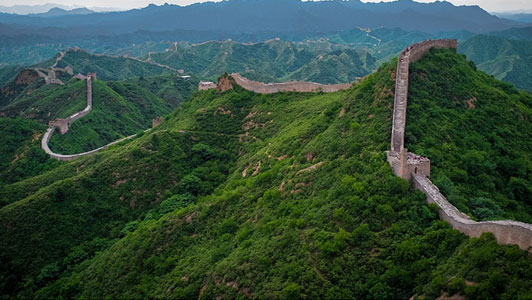
Great Wall Of China
The Great Wall of China is a series of fortifications made of stone, brick, tamped earth, wood, and other materials, generally built along an east-to-west line across the historical northern borders of China to protect the Chinese states and empires against the raids and invasions of the various nomadic groups of the Eurasian Steppe with an eye to expansion. Several walls were being built as early as the 7th century BC. These, later joined together and made bigger and stronger, are collectively referred to as the Great Wall. Especially famous is the wall built in 220–206 BC by Qin Shi Huang, the first Emperor of China. Little of that wall remains. The Great Wall has been rebuilt, maintained, and enhanced over various dynasties; the majority of the existing wall is from the Ming Dynasty.
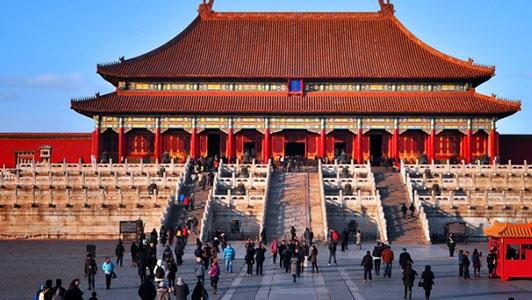
Forbidden City
The Forbidden City is a palace complex in central Beijing, China. The former Chinese imperial palace from the Ming dynasty to the end of the Qing dynasty, it now houses the Palace Museum.

Temple Of Heaven
The Temple of Heaven is an imperial complex of religious buildings situated in the southeastern part of central Beijing.
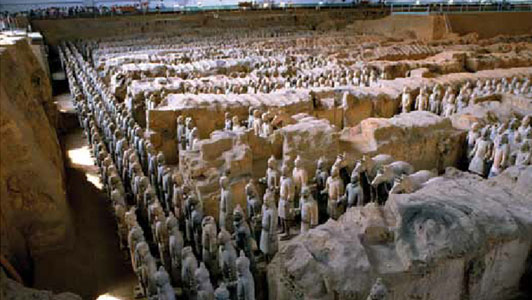
Terracota Army
The Terracotta Army is a collection of terracotta sculptures depicting the armies of Qin Shi Huang, the first Emperor of China. It is a form of funerary art buried with the emperor in 210–209 BCE and whose purpose was to protect the emperor in his afterlife.
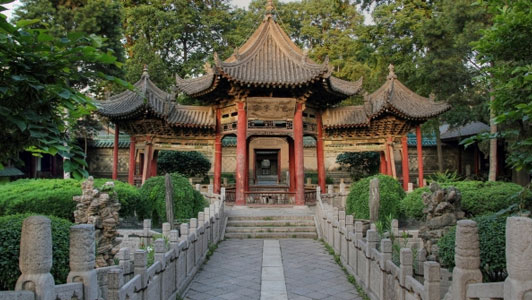
Great Mosque
The Great Mosque of Xi'an is the largest mosque in China. An active place of worship within Xi'an Muslim Quarter, this courtyard complex is also a popular tourist site. The majority of the mosque was built during the early Ming dynasty. It now houses more than twenty buildings in its five courtyards, and covers 12,000 square meters.

Li River
The Li River or Li Jiang is a river in Guangxi Zhuang Autonomous Region, China. It flows 83 kilometres (52 mi) from Guilin to Yangshuo, where the Karst Mountains and river sights highlight the famous Li River cruise.
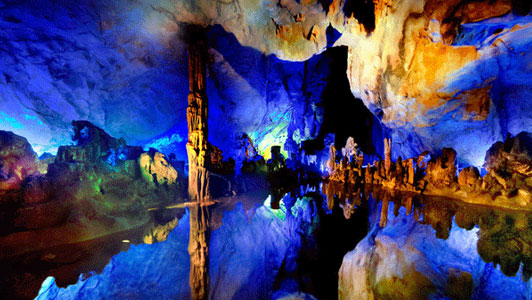
Reed Flute Cave
The Reed Flute Cave, also known as "the Palace of Natural Arts” is a landmark and tourist attraction in Guilin, Guangxi, China. It is a natural limestone cave with multicolored lighting and has been one of Guilin’s most interesting attractions for over 1200 years. It is over 180 million years old.
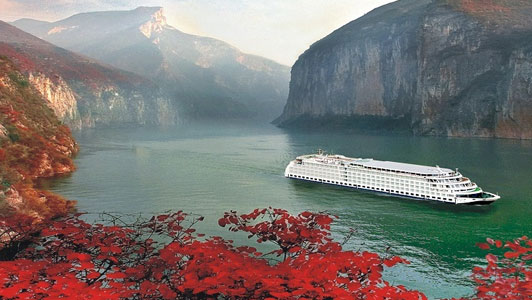
More than 60 vessels operate cruises along the Yangtze, the world's third-longest river, which stretches 6,300 km (3,900 miles) from Shanghai through China's heartland. ... The Yangtze (sometimes called the "yellow river” or, to be politically correct, the “golden River”) is China's lifeline
